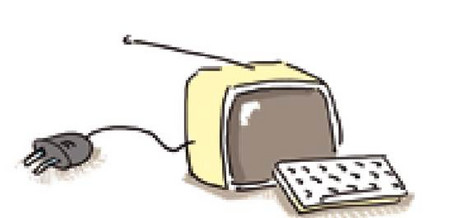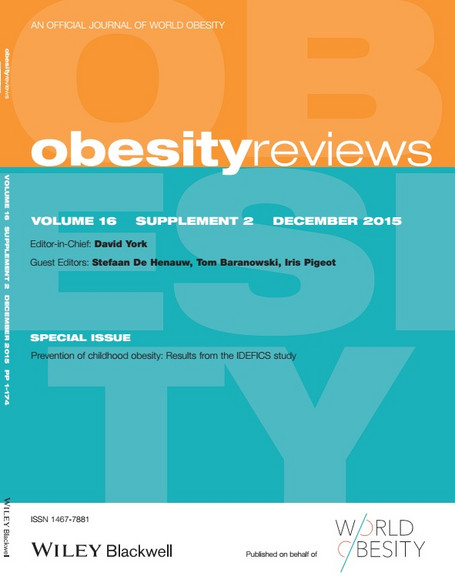Results
Before the implementation of the IDEFICS intervention, and having considered international recommendations, IDEFICS took a thorough look at these the adherence of children to key behaviours related to childhood obesity measured at the baseline survey (T0, see page “Study design”), such as drinking water and sweetened drink, consumption of fruit and vegetables, daily TV time, physical activity, family time and adequate sleep duration, and compared them with measurements carried on after 2 years (T1), for assessing the effects of the IDEFICS intervention. In this page we show some of these observations.
Enhancing daily consumption of water, fruits and vegetables
Recommendation: To emphasise and promote the reduction of consumption of sugar sweetened drinks, especially that of sweetened milk, in future recommendations and interventions. Plain water should be promoted as the main source of liquid for children. Plant food consumption should be promoted in Europe since its consumption is low and it is the main contributor to a well-balanced diet.

Families in the intervention communities reported a significantly lower sugar propensity and a higher water propensity compared with families in the control communities, while fat and fruit and vegetables propensities were similar. No significant diet differences between intervention and control children were present at the baseline survey (T0).
Further results on effects of the intervention on consumption of water and sugar we recommend following article:
Arvidsson L, Bogl LH, Eiben G, Hebestreit A, Nagy P, Tornaritis M, et al. Fat, sugar and water intakes among families from the IDEFICS intervention and control groups: first observations from I.Family. Obes Rev. 2015;16 Suppl 2:127-37. http://onlinelibrary.wiley.com/doi/10.1111/obr.12325/abstract
Enhancing daily physical activity
Recommendation: The enhancement of moderate to vigorous physical activity (MVPA) should have an outstanding place and role in any health-related recommendation. 1 hour/day MVPA may be an unrealistically high target for preschool children.

In boys and girls, no significant differences in physical activity (PA) and sedentary time (ST) were found between intervention and control groups over 2 years. Strong temporal effects were found in the total sample of boys and girls: the percentage of time spent in light PA per day decreased (by 4 percentage points) in both boys and girls between baseline and follow-up, while time spent in ST per day increased (by 4 percentage points) in both sexes over time. Percentage of time spent in moderate to vigorous PA (MVPA) per day remained stable over time in boys and girls.
Despite the socio-ecological approach and implementation of a culturally adapted intervention in each country, no effects of the IDEFICS intervention were found on children’s objectively measured PA and ST. Behavioural interventions for children may need to enhance specificity and intensity at the family level using other behaviour change techniques and more direct strategies to reach parents.
Further results on effects of the intervention on physical activity and sedentary behaviour we recommend following article:
Verbestel V, De Henauw S, Barba G, Eiben G, Gallois K, Hadjigeorgiou C, et al. Effectiveness of the IDEFICS intervention on objectively measured physical activity and sedentary time in European children. Obes Rev. 2015;16 Suppl 2:57-67.
http://onlinelibrary.wiley.com/doi/10.1111/obr.12348/abstract
Reducing screen time
IDEFICS recommends 11 hours or more sleep for pre-school children and 10 hours for school children (6-10 years). Promotion of sufficient sleep should be part of any health-related recommendations.

A small intervention effect was seen on weeknight sleep duration in that the decrease in sleep duration over 2 years was smaller in the intervention (15 min.) as compared with control regions (19 min). There was no overall intervention effect on weekend sleep duration or on the presence of a TV in the bedroom. A small significant time effect between baseline and follow-up was found on bedroom TV presence depending on self-reported intervention exposure. Children without a TV in the bedroom had longer nocturnal sleep duration.
Further results on effects of the intervention on sleep we recommend following article:
Michels N, De Henauw S, Eiben G, Hadjigeorgiou C, Hense S, Hunsberger M, et al. Effect of the IDEFICS multilevel obesity prevention on children's sleep duration. Obes Rev. 2015;16 Suppl 2:68-77.
http://onlinelibrary.wiley.com/doi/10.1111/obr.12327/abstract
Further publications on the IDEFICS obesity prevention programme:
- Verbestel V, de Henauw S, Marild M, Storcksdieck S, Fernandez Celemin L, Gallois K, et al. The IDEFICS intervention toolbox - a guide to successful obesity prevention at community level. Public Health - Social and Behavioral Health. 2012. p. 3-40.
- Verbestel V, de Henauw S, Maes L, Haerens L, Marlid S, Eiben G, et al. Using the intervention mapping protocol to develop a community-based intervention fpr the prevention of childhood obesity in a multi-centre European project: the IDEFICS intervention. Int J Behav Nutr Phys Act. 2011;82(8).
- IDEFICS Supplement on intervention
In December 2015 a special issue titled “Prevention of childhood obesity: Results from the IDEFICS study” was published by the journal Obesity Reviews. All articles can be found (OpenAccess) at the archive of the journal Obesity Reviews here.
Content:
- Ahrens W. Preface. Obes Rev. 2015;16 Suppl 2:1.
- Pigeot I, Baranowski T, De Henauw S, Group IIS, consortium I. The IDEFICS intervention trial to prevent childhood obesity: design and study methods. Obes Rev. 2015;16 Suppl 2:4-15.
- De Henauw S, Huybrechts I, De Bourdeaudhuij I, Bammann K, Barba G, Lissner L, et al. Effects of a community-oriented obesity prevention programme on indicators of body fatness in preschool and primary school children. Main results from the IDEFICS study. Obes Rev. 2015;16 Suppl 2:16-29.
- De Bourdeaudhuij I, Verbestel V, De Henauw S, Maes L, Huybrechts I, Marild S, et al. Behavioural effects of a community-oriented setting-based intervention for prevention of childhood obesity in eight European countries. Main results from the IDEFICS study. Obes Rev. 2015;16 Suppl 2:30-40.
- Mårild S, Russo P, Veidebaum T, Tornaritis M, De Henauw S, De Bourdeaudhuij I, et al. Impact of a community based health-promotion programme in 2- to 9-year-old children in Europe on markers of the metabolic syndrome, the IDEFICS study. Obes Rev. 2015;16 Suppl 2:41-56.
- Verbestel V, De Henauw S, Barba G, Eiben G, Gallois K, Hadjigeorgiou C, et al. Effectiveness of the IDEFICS intervention on objectively measured physical activity and sedentary time in European children. Obes Rev. 2015;16 Suppl 2:57-67.
- Michels N, De Henauw S, Eiben G, Hadjigeorgiou C, Hense S, Hunsberger M, et al. Effect of the IDEFICS multilevel obesity prevention on children's sleep duration. Obes Rev. 2015;16 Suppl 2:68-77.
- De Bourdeaudhuij I, Verbestel V, De Henauw S, Maes L, Mårild S, Moreno LA, et al. Implementation of the IDEFICS intervention across European countries: perceptions of parents and relationship with BMI. Obes Rev. 2015;16 Suppl 2:78-88.
- Verloigne M, Ahrens W, De Henauw S, Verbestel V, Marild S, Pigeot I, et al. Process evaluation of the IDEFICS school intervention: putting the evaluation of the effect on children's objectively measured physical activity and sedentary time in context. Obes Rev. 2015;16 Suppl 2:89-102.
- Nicholls SG, Pohlabeln H, De Bourdeaudhuij I, Chadjigeorgiou C, Gwozdz W, Hebestreit A, et al. Parents' evaluation of the IDEFICS intervention: an analysis focussing on socio-economic factors, child's weight status and intervention exposure. Obes Rev. 2015;16 Suppl 2:103-18.
- Lissner L, De Bourdeaudhuij I, Konstabel K, Marild S, Mehlig K, Molnar D, et al. Differential outcome of the IDEFICS intervention in overweight versus non-overweight children: did we achieve 'primary' or 'secondary' prevention? Obes Rev. 2015;16 Suppl 2:119-26.
- Arvidsson L, Bogl LH, Eiben G, Hebestreit A, Nagy P, Tornaritis M, et al. Fat, sugar and water intakes among families from the IDEFICS intervention and control groups: first observations from I.Family. Obes Rev. 2015;16 Suppl 2:127-37.
- Kovács E, Hunsberger M, Reisch L, Gwozdz W, Eiben G, De Bourdeaudhuij I, et al. Adherence to combined lifestyle factors and their contribution to obesity in the IDEFICS study. Obes Rev. 2015;16 Suppl 2:138-50.
- Williams G. The IDEFICS intervention: what can we learn for public policy? Obes Rev. 2015;16 Suppl 2:151-61.
- Baranowski T, Lytle L. Should the IDEFICS outcomes have been expected? Obes Rev. 2015;16 Suppl 2:162-72.
- Pigeot I, Baranowski T, De Henauw S. Acknowledgements. Obes Rev. 2015;16:173-4.

